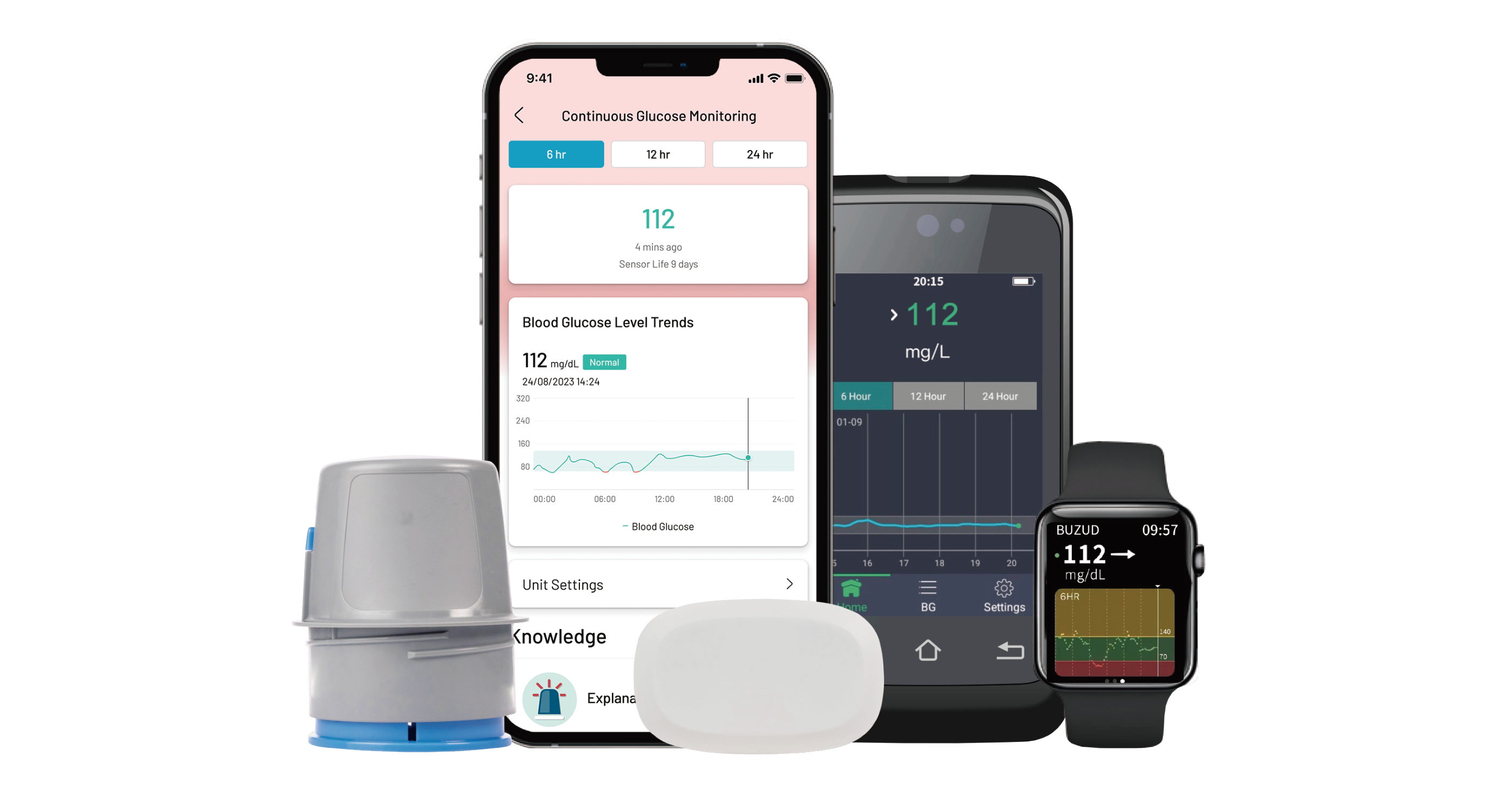
Calibrating the BUZUD Continuous Glucose Monitoring (CGM) System: Ensuring Accuracy for Optimal Diabetes Management
Continuous glucose monitors (CGMs) are gaining widespread popularity, increasingly supplanting traditional blood glucose monitoring systems for many individuals. These compact devices, worn on the body, provide continuous glucose monitoring, reducing or even eliminating the need for frequent finger stick tests.
It is important to note that readings from finger stick tests and CGMs may differ because they measure glucose levels in different fluids: a glucometer measures blood glucose, whereas a CGM measures glucose in interstitial fluid.
If you are currently using or considering the use of a CGM, understanding the calibration process is crucial. Proper calibration ensures the accuracy of the glucose readings provided by your CGM.
How to Calibrate a CGM
Calibration involves aligning the CGM’s sensor to provide precise glucose readings. This can be performed by the manufacturer, the user, or both. Accurate calibration requires a glucose monitor and appropriate testing supplies.
- Storage and Preparation: Ensure your testing supplies are stored at a cool temperature, and verify that test strips have not expired. Wash your hands with soap and water or use alcohol to avoid contaminants that could affect the reading. Blood glucose should only be tested using fingertip samples.
- Calibration Process: After measuring your blood glucose with a glucometer, enter the value into your CGM receiver, insulin pump, or mobile application.
When to Calibrate a CGM
Proper calibration of the BUZUD CGM system is essential to ensure accurate glucose readings. Here are the optimal times and conditions for calibration:
- Avoid Calibration in the First 24 Hours: Do not perform calibrations during the first 24 hours of using the CGM system. This period is crucial for the sensor to settle.
- Calibrate if Variance Exceeds 20%: If there is more than a 20% difference between the background glucose monitoring (BGM) and CGM readings, calibration is necessary.
- Calibrate on an Empty Stomach: Ensure fasting before calibrating. Ideal times are before meals or in the morning when blood glucose is above 5mmol/L. Calibration is not recommended when blood glucose is below 4.4mmol/L.
- Considering Blood Glucose Trends: Refer to the blood glucose trend arrow and instant value before calibrating. Perform calibration when the trend is steady, slowly rising, or falling.
- Steady: Changing less than 0.06 mmol/L per minute.
- Slowly Rising or Falling: Changing between 0.06 to 0.11 mmol/L per minute.
- Number of Calibrations: There are no limits on the number of daily calibrations, but following the optimal timings and conditions is essential for accuracy.
For accurate calibration, it is crucial to enter finger prick blood glucose data into the CGM within five minutes of testing. This narrow window ensures that the blood glucose reading is still reflective of your current glucose level, minimizing discrepancies caused by the naturally fluctuating glucose levels in your body. Prompt entry of this data enhances the accuracy and reliability of the CGM readings, thereby supporting better diabetes management. If you do not wish to calibrate, you can save the data to blood glucose.
Calibration Tips
- Timely Entry: Enter the calibration data into the CGM receiver or pump promptly. Glucose levels fluctuate continuously, so using outdated blood glucose numbers can lead to inaccurate calibration.
- Stable Glucose Levels: The optimal times for calibration are when blood glucose levels are stable, typically first thing in the morning or before meals, as indicated by a flat trend arrow.
- Avoid Rapid Changes: Do not calibrate during periods of rapidly changing glucose levels, such as after eating, taking insulin, or exercising, when trend arrows point up or down.
- Significant Discrepancies: If there is a significant discrepancy (more than 20 percent) between blood glucose and sensor glucose readings, wait until the levels are more consistent before calibrating.
By following these guidelines, you can ensure your CGM provides the most accurate data, aiding in better diabetes management.
Conclusion
Calibration is a critical step in maintaining the accuracy of the BUZUD Continuous Glucose Monitoring system. By adhering to the recommended calibration timing and conditions, users can ensure their CGM provides reliable data.
Take control of your diabetes management with the advanced technology of BUZUD Continuous Glucose Monitoring System. Ready to experience the difference? Check out our CGM system today and find the perfect fit for your needs.
If you need assistance, you can visit our BUZUD showroom for calibration support.
No Comments
Leave a Reply
You must be logged in to post a comment.
